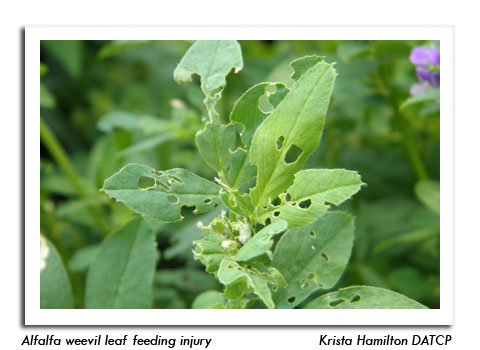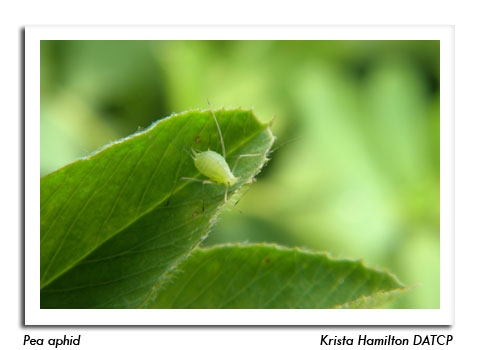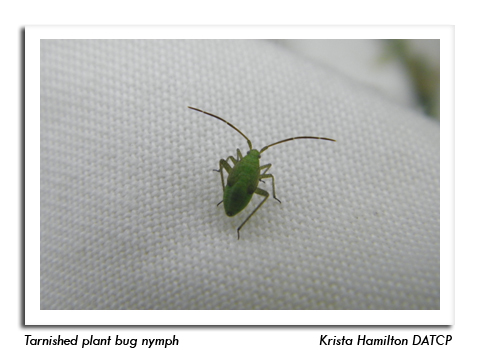
 |
|
|
Forages & Grains
Volume 60 Number 5 Date 05/21/2015 ALFALFA WEEVIL - Larval counts in the southern half of the state continue to be low. Alfalfa surveyed in Columbia, Dane, Dodge, Green, Iowa, Jefferson, La Crosse, Rock and Sauk counties contained only 1-23 weevils per 100 sweeps, and 39% of fields sampled still had no apparent larval population. Based on the low number of larvae collected and the fact that alfalfa harvest has started, significant damage should not develop before most first-crop alfalfa is cut, except in rare fields or if harvest is postponed beyond the first week of June. Routine sampling for larvae and leaf tip feeding should be under way and continue through harvest or until the weevil season has passed. PEA APHID - Densities varied from 0.1-4.5 aphids per sweep and averaged 1.5 per sweep, which is a moderate increase from last week's average of 0.5 per sweep. The appearance of winged females, an indicator of imminent dispersal from alfalfa into nearby pea and vegetable fields, was noted in several fields surveyed from May 14-20. POTATO LEAFHOPPER - Migrants are distributed in low numbers across the southern half of the state. The average count from May 14-20 was less than one leafhopper per 100 sweeps, with a high count of four per 100 sweeps found near Baraboo in Sauk County. PLANT BUG - Nymphs of both the alfalfa and tarnished plant bug were collected from alfalfa for the first time this week. The tarnished plant bug remains the more numerous of the two species. -- Krista Hamilton, DATCP Entomologist WHEAT PESTS - Surveys in 13 wheat fields, two rye fields and one barley field in Dane, Dodge and Fond du Lac counties indicate insect and disease pressure is low. Powdery mildew was observed in five fields, tan spot in four fields and Septoria in one. No rust was detected. Wheat was at flag leaf to early boot stages (Feekes F8-F9). Also found were the English grain aphid and bird cherry-oat aphid, at low levels of 1-3 aphids per plant, in two fields each. Survey observations confirm stem rust is developing on common barberry in Dane County. -- Adrian Barta, Plant Pest & Disease Specialist 




|
|
|